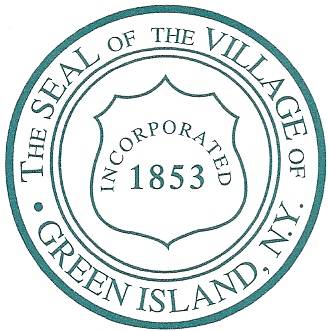At a news conference yesterday, Green Island Mayor Ellen McNulty-Ryan, Albany County Executive Dan McCoy, Assemblyman John McDonald III, Albany County Legislature Deputy Majority Leader Sean Ward and Albany County Legislature Chairman Shawn Morse called on state and federal officials to help Green lsland residents facing significant increases in flood insurance through policies issued by the National Flood Insurance Program (NFIP).
McCoy, McNulty-Ryan and the elected officials are calling for an updated hydrological study of the Upper Hudson River immediately to determine the actual potential flooding impact. The Federal Emergency Management Agency, which administers the NFIP, utilized a range of data sources for the recent revisions that may not accurately represent more recent peak flow data and the effect of additional flood mitigation measures on flood control.
“The people of Green Island and those in other river communities including Menands, Watervliet and Cohoes need relief,” said McCoy. “The high cost of flood insurance is another burden people face and we need the state to work with municipalities like Green Island to get the best information to update the flood maps so they reflect actual conditions in the village.”
“Flood insurance premiums are one of the biggest burdens homeowners in the Green Island have faced recently, even more so than taxes,” said Green Island Mayor Ellen McNulty-Ryan. ”Recent changes to the National Flood Insurance Program over the last couple of years have made it unaffordable and have deflated home values in our Village. This is despite the fact that the residential area of Green Island has not experienced a flood since 1936. We need relief now. Thank you to County Executive Dan McCoy and our State and Federal leaders that have pledged to help with our plight. The future of our community is at stake.”
As of April 1, the National Flood Insurance Program increased premiums in high risk areas, such as Green Island, by as much as 25 percent. Since much of it is located in an area mapped as a special flood hazard area subject to inundation by the 1% annual chance flood, homeowners with mortgages must purchase the insurance and face high premiums. The average premium has increased dramatically and the cost can be prohibitive to those on a fixed income. Due to recent changes, several lenders are now requiring insurance with full replacement value, which means higher premiums. Right now, homeowners in Green Island pay as much as $3,500 for flood insurance despite the fact there has not been any flooding of a residential property in the village since 1936. In fact, since 1979, residents of the village have paid the highest premiums in the county despite filing amongst the fewest number of claims.
“I commend the County Executive for calling light to this issue,” said Shawn Morse, Chairman of the Albany County Legislature. “The Federal Government needs to reflect the changes along the upper Hudson in their maps so that residents can get some relief.”
“I find it troubling that the community of Green Island and many other communities in this area are still under the old version of the flood maps which play a critical role in the overall flood insurance premiums. The National Flood Insurance Program (NFIP) is under severe financial duress due to the significant volume of claims over the past several years as a result of the intensity and frequency of what used to be 100 year storms. Thanks to a coordinated effort at the Federal level, premium increases will not rise as quickly as originally planned however the increases are significant nonetheless. This has been an ongoing effort over several years due to the lack of FEMA funding to finish the updated maps. FEMA is the lead agency on floodplain mapping and sets flood insurance prices in accordance with federal laws. For these communities, it is critical that the flood maps be updated as soon as possible to reflect fair premiums,” said Assemblymember John T. McDonald III (D-Cohoes). “This year the legislature and the Governor included funding in the state budget for the NYS Canal Corporation to conduct a larger analysis of areas prone to flooding along the Upper Hudson River. This study will play a role in conducting a hydrology study which is essential for properly completing the flood maps. I will continue to advocate for greater funds if needed to ensure this project is seen through to completion. As a former Mayor, I share the concerns of Mayor McNulty and County Executive McCoy. Addressing the outdated flood maps will play a role in stabilizing, if not reducing, insurance premiums which will allow longtime residents to continue to make the community their home.”
“As the current President of the National Conference of Insurance Legislators I understand how important it is for homeowners to have affordable flood insurance available to them,” stated Senator Neil D. Breslin. “The issue of how to make flood insurance more widely available and affordable has been at the forefront of our discussions both here in New York and on a national level as well. Congress and FEMA originally intended the NFIP funded with premiums collected from policyholders rather than with tax dollars. Unfortunately this has not been the case because the NFIP cannot do some things that private insurers do to manage their risks. NFIP is not structured to build a capital surplus, cannot reject high-risk applicants and is subject to statutory limits of rate increases. Simply put premium rates do not reflect actual flood risk. Additionally, repetitive loss properties, while representing only about 1 percent of the policies, account for 25 – 30 percent of all claims. It is critical that FEMA take the necessary steps to ensure that premiums are more reflective of flood risks so that the residents of Green Island and similar communities are not in a situation where they are forced from their homes.”
###
